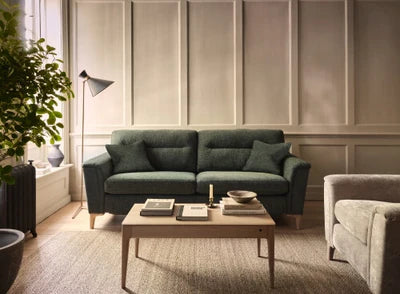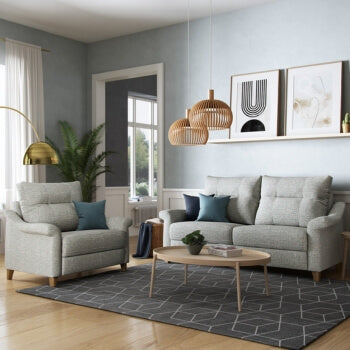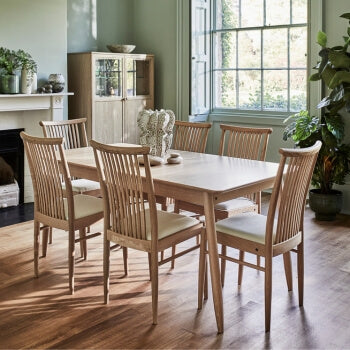Dining Dilemma: How to Choose the Best Dining Table
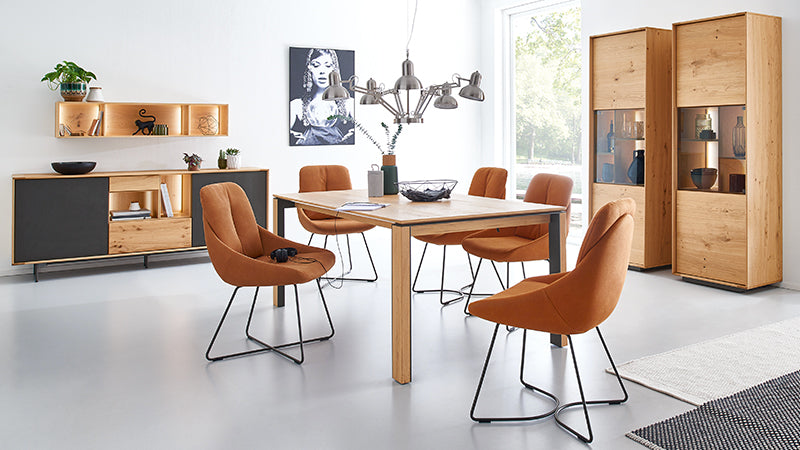
When choosing furniture for your home, your dining table is one of the most important pieces. As the focal point of the room, it sets the tone for the rest of the space. But with so many different styles, materials and shapes to choose from, it can be tricky to know how to pick the right one for your home.
In this article, we’ll help you navigate the dining table dilemma and pick the perfect table for your space. We’ll explore the different styles of dining tables and chairs, as well as the different sizes, shapes and finishes available. We’ll also give you some tips on how to style your dining table and make it look its best.
Are you ready?
Read on to discover everything you need to know about choosing the best dining table for your home.
Contents:[hide]
Find the best style for your space
When deciding on the ideal dining table for your space, a few key factors must be taken into account. Primarily, the size of your dining room must be considered. If space is limited, a smaller, more mobile table would be ideal. Whereas, if you have a large dining room, a bigger table that can accommodate more people would be a better option.
Additionally, the style of your dining room should be considered. A more formal dining room would pair well with a traditional table, whereas a more casual dining room would be suited for a contemporary table.
Below we have listed a variety of popular dining table styles, so you can get a better feel for what might work for your home.
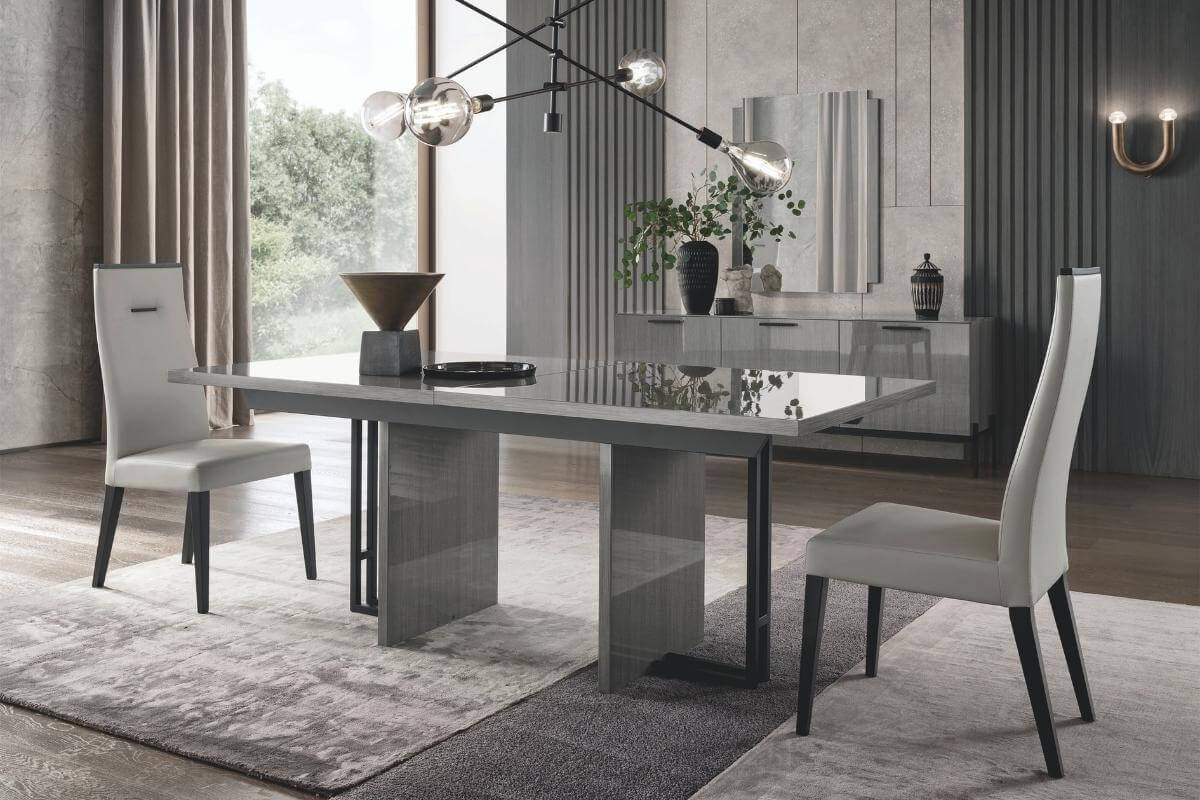
Image: Novecento Extending Dining Table
Contemporary dining tables
There are many contemporary dining tables to choose from, each with their own benefits. Glass tables are popular for their airy feeling and easy-to-clean surface, while metal tables are known for their durability. Wood tables are the traditional choice and can give a warm and inviting feeling to the room.
However, when choosing a contemporary dining table, you should also consider the other furniture in the room to ensure the table matches and creates a cohesive look. There are many different styles of contemporary dining tables to choose from. You can find tables made from a variety of materials, in a variety of shapes and sizes. The most popular materials for contemporary dining tables are glass, metal, and wood.
Traditional dining tables
Close your eyes and picture a dining room table. Did you see one? Most likely, what you imagined was a traditional dining table—an excellent choice to consider due its high-quality and timeless elegance. Traditional dining tables are made with sturdy wood, carved legs, and a darker finish. Traditional tables are often rectangular or square and they can easily slot into a number of different design aesthetics. You can lean into the traditional vibe by pairing it with matching dining chairs or go more quirky with mismatched chairs and unique place settings.
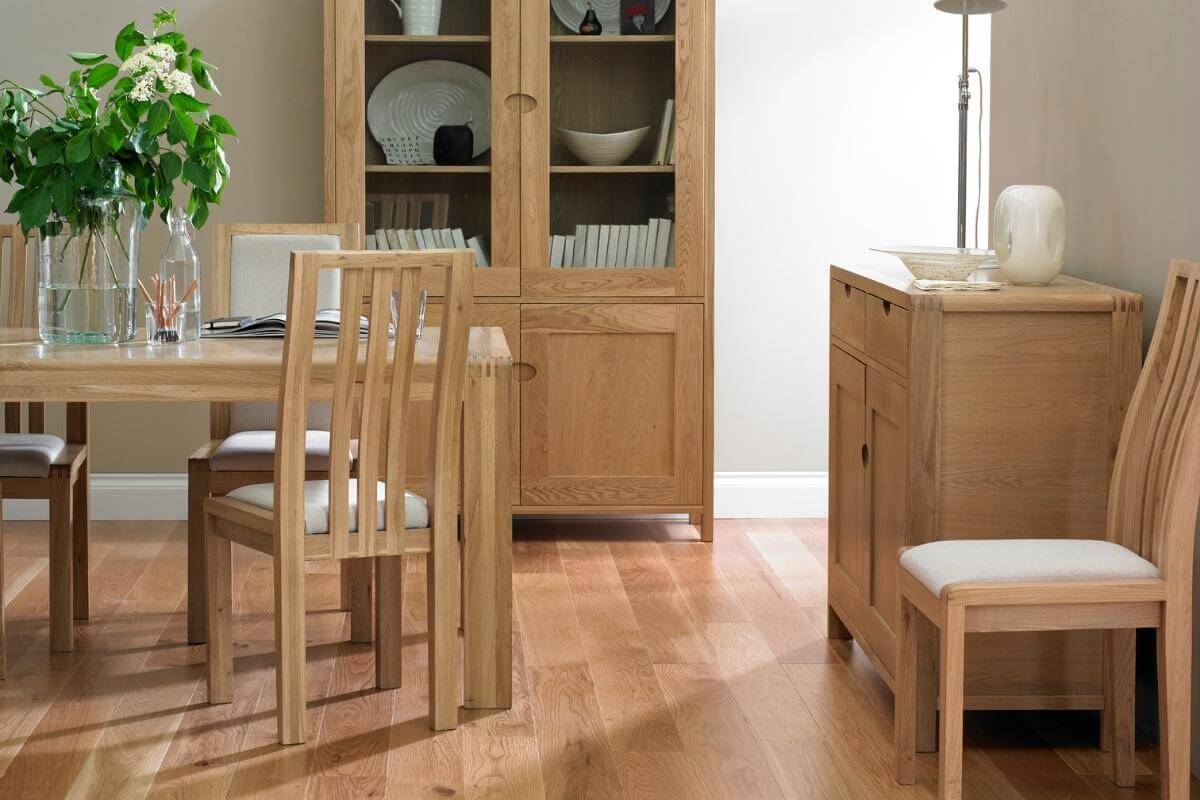
Image: Ercol Bosco Extending Dining Table
Parsons dining tables
Parsons dining tables are perfect for people with a more modern style; they are distinguished by their sleek, straight lines and 90-degree angles. A Parsons table is a square or rectangular dining table with legs that sit square and flush with the edges of the tabletop. Parsons tables can be made in any size and material, but they will always have a simple, clean look. The Parsons’ simple nature makes it timeless and versatile, whether it's part of your modernist home, matching with other similarly contemporary pieces, or you use it as a no-frills base for more elaborate decor elements.
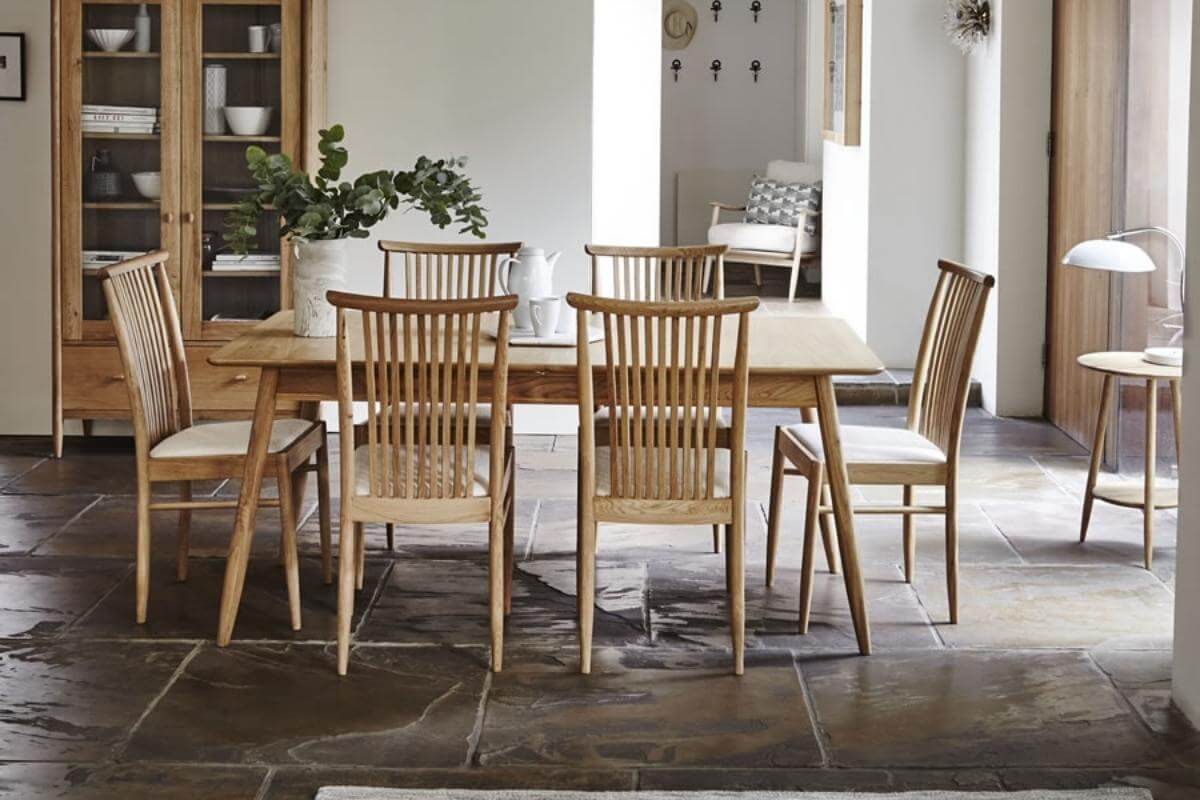
Image: Ercol Teramo Medium Extending Table
Mid-century modern dining tables
Mid-century modern furniture, which originated in the 1940s, 50s, and 60s, is still incredibly popular today. Fans love the natural tones, simple yet still aesthetically pleasing characteristics and versatility of the style. A typical mid-century modern dining table will be made of warm-toned wood with angled wooden peg legs, minimalist style and clean lines.
Mid-century modern is a safe style to bet on for continuing to be in fashion and perfect for dinner parties even decades after you buy your table.

Image: Ercol Monza Extending Dining Table
Farmhouse dining tables
If you want to create a warm, welcoming, family feel in your dining room, the farmhouse style might be the perfect choice for you. It’s rustic, cosy and a touch vintage, working perfectly with farmhouse or modern farmhouse design styles. It’s a great way to bring some of the cosy nature of the outdoors into any home. Plus, this style of table is often made of solid wood or natural wood, so they’re quite sturdy, making them perfect if you’re planning to use yours heavily.
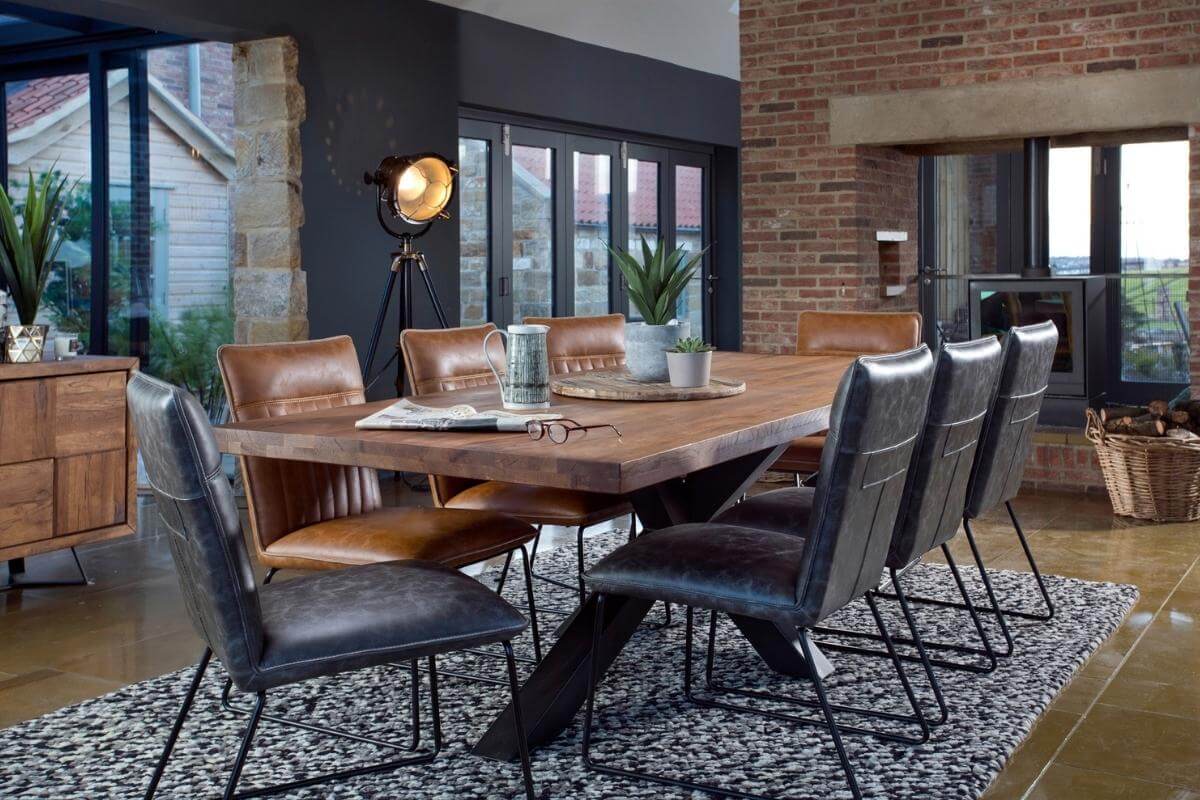
Image: Somerville Dining Table
Industrial dining tables
If you prefer the rustic look of exposed materials such as reclaimed wood, iron, brick, and concrete, then you would love an industrial-style dining table. These tables forego the illusion of perfection and show their inner workings instead. Industrial tables make a bold statement that is both daring, interesting and more contemporary than other styles in this article.

Image: Pasadena Round Table
Pedestal dining tables
The pedestal table, inspired by the mid-century modern Tulip Table, consists of a tabletop on top of a single pedestal base in the middle. They often come in a round or oval shape and provide a look of streamlined symmetry that can give your room a polished appearance. There are also double pedestal tables, which as the name suggests, have two pedestal bases instead of one.
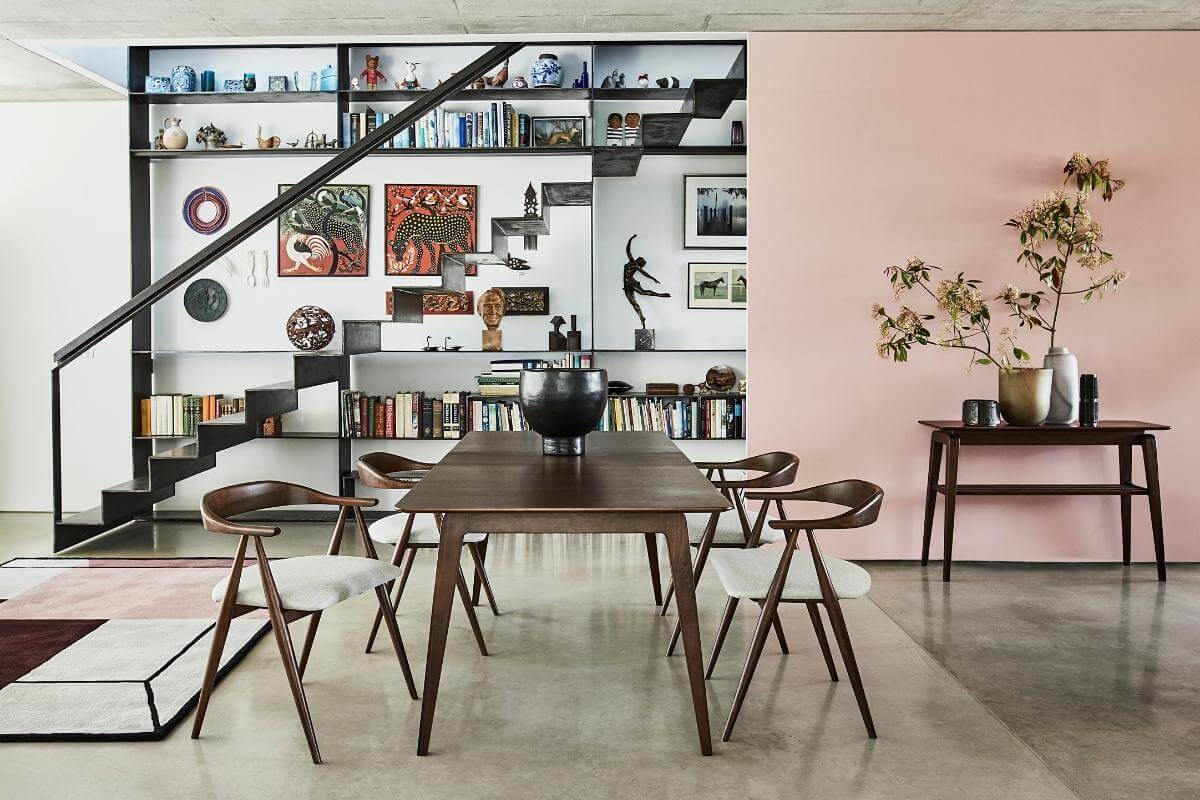
Next: Ercol Lugo Medium Extending Table
Scandinavian dining tables
Scandinavian dining tables are generally simple and use organic, natural materials. They also have a more minimalist style. Many Scandinavian dining tables incorporate elements from mid-century modern design, like long tapered legs. Scandi style also encompasses a range of shapes, so rectangular, oval, and round tables can all be classified as Scandinavian designs.
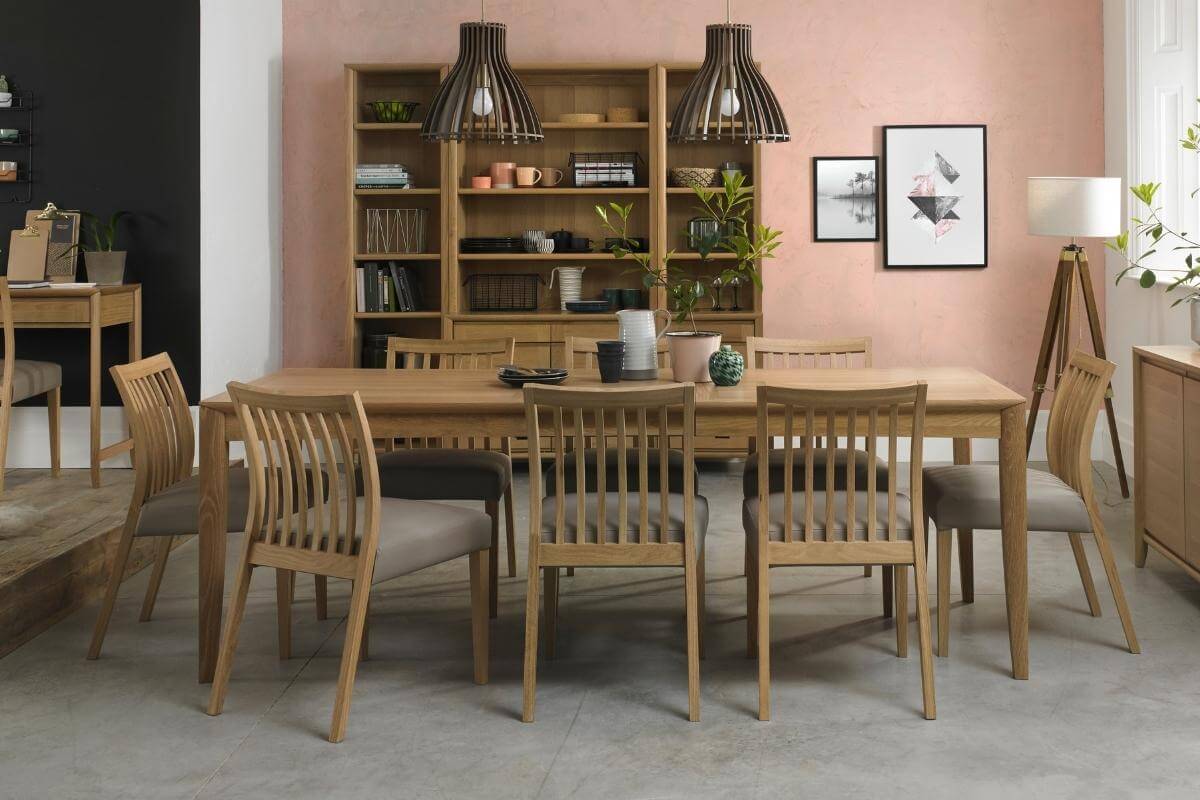
Image: Brighton Oak Dining Table
Extendable dining tables
Extendable dining tables are the epitome of convenience. You might not be able to tell by looking at them, but they are designed in a way that allows you to expand them when you need more dining area space on the tabletop. The best part of this style is its versatility. On a day-to-day basis, your table won’t take up too much space in the room. But when you need it, you can extend it to accommodate more people for a game night, dinner or party.
Extendable dining tables tend to be rectangular or square tables. If you’re looking for an oval dining table that also offers flexibility, you could look at a drop-leaf table that has a tabletop with larger hinged leaves on either side to create more space.
Trestle dining tables
Trestle dining tables may originate from the Middle Ages but this style is just as practical today as it was centuries ago. A tabletop sitting upon two trestle supports, this type of table is sturdy and functional while also creating a timeless, classic look.
Choose an appropriate size and shape
When it comes to choosing a dining table, size and shape are two of the most important factors to consider. After all, the dining table is the centrepiece of the room and should be able to accommodate all of your guests comfortably.
But with so many different sizes and shapes to choose from, how do you know which one is right for your space?
Measure up
First, you'll need to measure the space where the table will go. You'll want to leave at least 36 inches of space around the table for guests to move comfortably. Once you have your measurements, you can start considering which size and shape table would be best for your space.
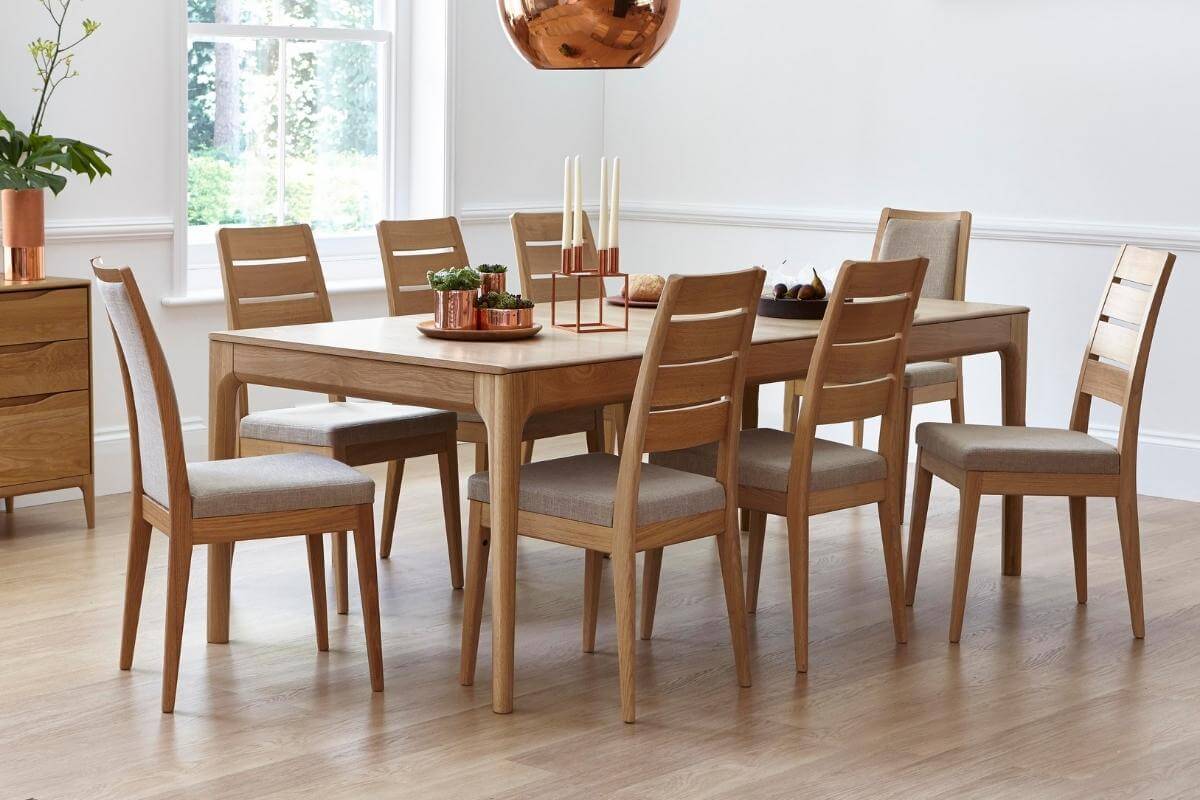
Image: Ercol Romana Extending Dining Table
Rectangular dining tables
The rectangular dining table shape is one of the most common for a reason: most dining rooms are rectangular. Additionally, rectangular dining tables seat more than four people comfortably and usually come with an extra leaf to extend the length, if need be.
Ideally, a rectangular table should be between 36 and 42 inches wide. Narrower rectangles can work in a narrow room, but if the table is any narrower than 36 inches, you may find it difficult to fit place settings on both sides as well as enough food on the table. If you do prefer a narrow table, you might want to consider placing the food on a sideboard or buffet so guests can help themselves before sitting down.
Square dining tables
Square rooms look best with square dining tables. Square dining tables are also a good solution if you do not have a large group to seat most of the time. A square table that can be expanded with leaves is good for those times you will need to seat more guests. Two square tables can even be grouped together to create a larger rectangular seating arrangement for special occasions.
A benefit of having square tables is that they provide intimacy and a satisfying solution to seating a small number of people. It can be off-putting to have a large rectangular table if there are only two or three people present for most of your meals—a larger table can make the space seem cold.

Image: Ercol Siena Breakfast Table
Round dining tables
A round dining table is a potential solution for a smaller or square-shaped room and has many benefits over a square table. In a small gathering, a round table is better since everyone can see everyone else, conversations are easier and the setting feels more intimate.
Larger gatherings are not ideal for round tables. Even though you can still see others, they will seem far away and you may have to raise your voice to be heard. Also, most dining rooms cannot fit large round tables.
If you do prefer a round table and think you may need to seat a larger number of people occasionally, consider getting a round table with an extension leaf. That way, you can use your round table most of the time but extend it when you have company over.
Oval dining tables
An oval dining table is nearly indistinguishable from a rectangular one in all respects. The only notable difference is that it appears to take up less space because of the rounded corners, though this also means it has less surface area. If you have a room that is narrower or smaller and might occasionally need to seat more people, then an oval table might be a better option for you.
Pick the perfect finish
There are a few things to consider when choosing the best finish for your dining table. The finish should be durable, since the table will likely get a lot of use. It should also be easy to clean, since spills are bound to happen. And finally, the finish should be beautiful, since the dining table is usually the focal point of the room.

Image: Havana 200cm Dining Table
Wood
Solid wood is a classic material because it is enduring and simple to fix. Pine, acacia, mango and teak are economically viable, trendy alternatives. Wood expands and contracts in response to heat and moisture and can be prone to scratches and wear, but is relatively easy to repair.
Veneer/Wood-Look
Wood veneer is typically more affordable than solid wood. Here, a very thin layer of solid wood (or material printed to resemble wood) is glued to a plywood or other wood core. To identify good veneer, look for tables with clearly-labelled core interiors, like kiln-dried hardwood. One way to spot cheaper veneers is to look underneath the table at the store.
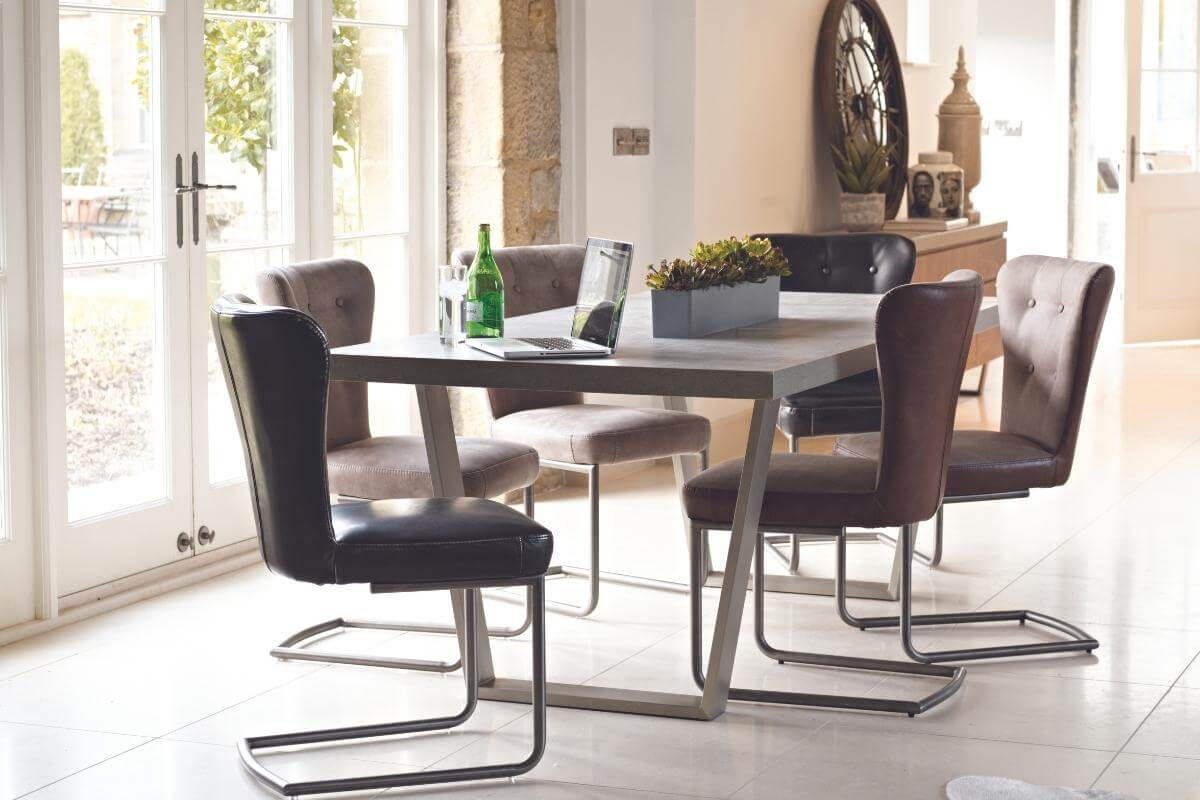
Image: Palm Harbour Dining Range
Stone and Stone-Look
Different types of stone tabletops are made from materials like marble, quartz composite or cast stone (e.g. cement). Stone is a strong material but can sometimes be porous and absorb stains. It can also be quite heavy. The cost of stone tabletops can differ a lot, with cheaper options like cement-topped pieces available for under £500, whereas marble-topped ones can cost thousands of pounds.
Glass
There are three main types of glass tabletops: clear, frosted, and tinted. They are relatively inexpensive and can make a room feel more open and spacious. Although glass is not susceptible to moisture, it can chip, scratch, or crack from heat. It also shows fingerprints easily. A glass tabletop can last for many years if you are careful with it, but it will start to look bad quickly if you are prone to chipping the edges or scratching the surface.
Metal
Metal, including stainless steel, brass, zinc and lacquered or painted versions of these, is used more frequently for table bases than tops. Metal is durable and not easily damaged. But because of its higher-shine, it shows every fingerprint and can require special cleaning tools. Also, painted metals can be hard to repair. These can be less expensive than wood tables, though it’s rare to find an all-metal dining table beyond utility tables.
Plastic and Laminates
Man-made materials like plastics and laminates, which can be either moulded into a certain shape or glued onto plywood or another core, are an inexpensive option. They can be quite durable but are not seen as being of the highest quality. These materials usually don't stain easily and don't require much maintenance but are generally seen as being cheap.
Things to remember
In conclusion, choosing the best dining table for your home involves considering several factors. The size of your dining room and the number of people you typically entertain are important considerations. The shape of the table is also important. Round and oval tables are best for small spaces, while rectangular and square tables are better for larger spaces. Finally, think about the overall style of the table and your budget. With these factors in mind, you should be able to find the perfect dining table for your home.
Still need help?
If you still can't decide on the best dining table for your home, you can always pop into our Doncaster based furniture and flooring store, where one of our team will be more than happy to help you find the perfect dining table for you and your space.

